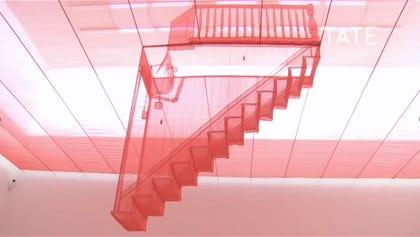
Born in Seoul in 1962, Do Ho Suh first encountered the intimate interplay of architecture and memory in the hanok-style house his father built from salvaged timbers, a structure that inspired Suh’s lifelong fixation on the emotional resonance of built space (The Guardian). After moving to the United States in 1991, Suh enrolled at the Rhode Island School of Design and Yale University, where he adopted translucent fabric as his primary medium, creating one-to-one replicas of the apartments and studios he inhabited (Victoria Miro). These delicate installations materialize the fragility of home and the constant negotiation of identity inherent in migration.
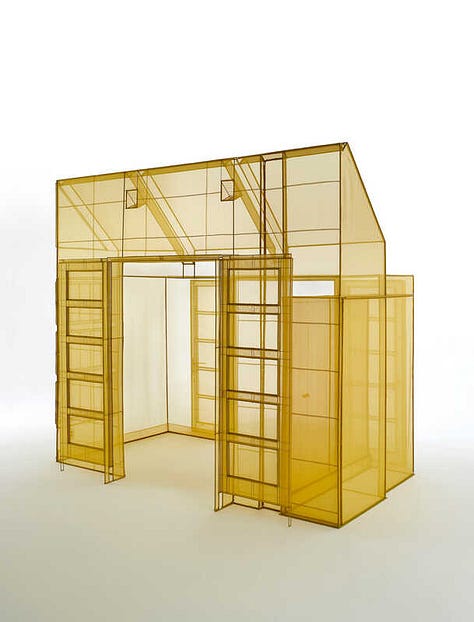
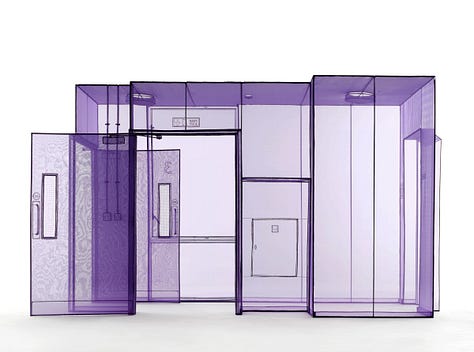
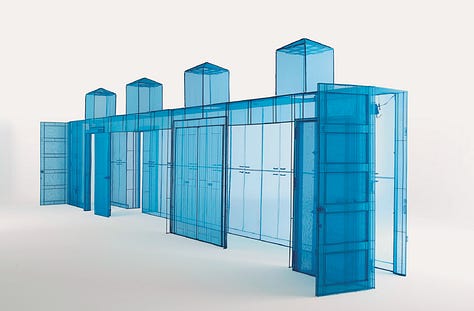
Collaborating with master Korean seamstresses, Suh hand-stitches translucent nylon mesh to recreate architectural details, doorknobs, radiators, and nail holes, with uncanny precision (LinkedIn). The weightless fabric dissolves conventional boundaries, rendering interior spaces as ghostly apparitions that can be folded, packed, and transported (Victoria Miro). In his Hub series, he extends this process to colored polyester corridors that trace his routes across Seoul, Providence, New York, and London, weaving personal trajectories into continuous spatial narratives (Victoria Miro).
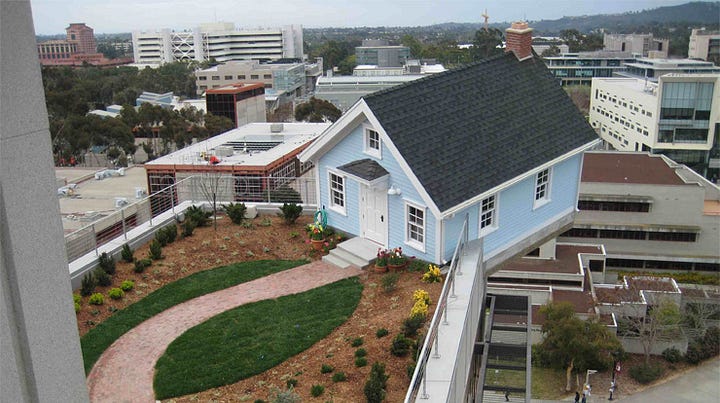
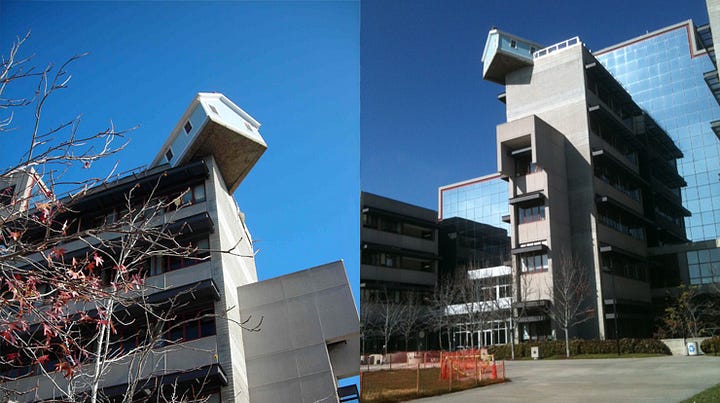
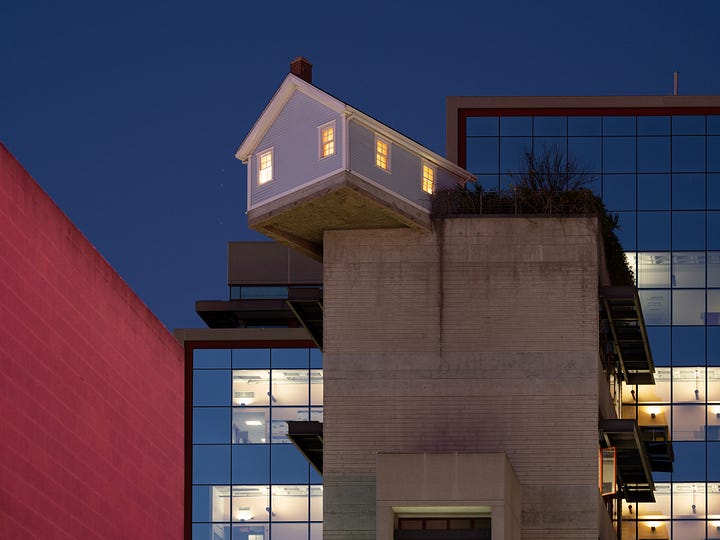
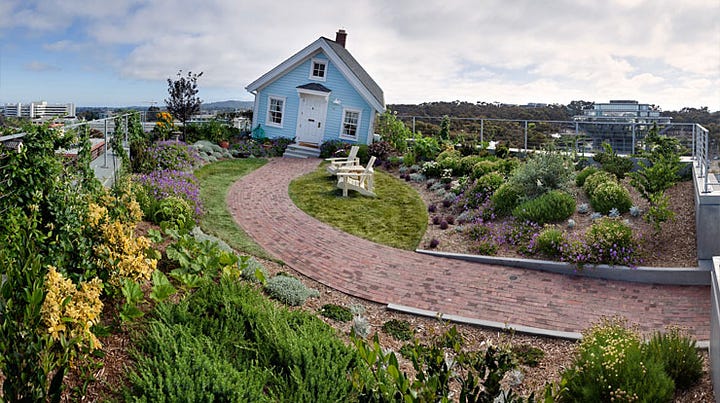
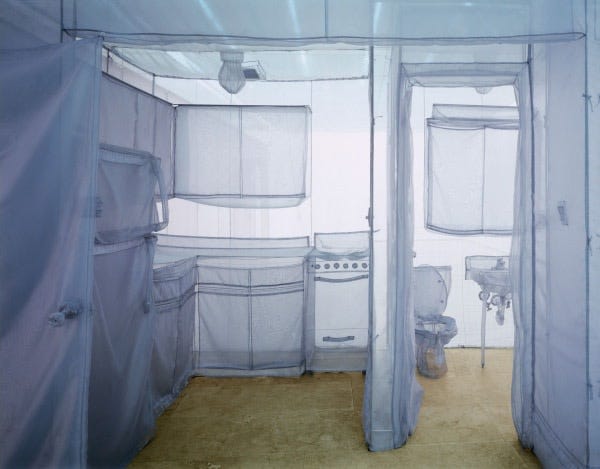
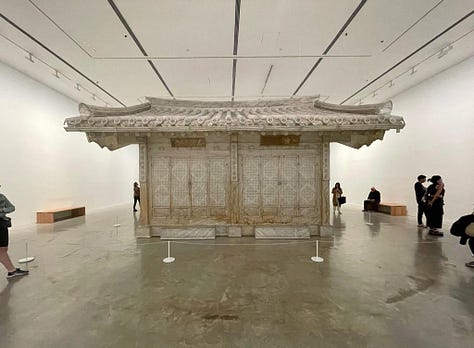
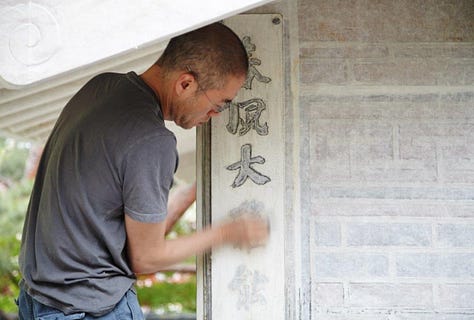
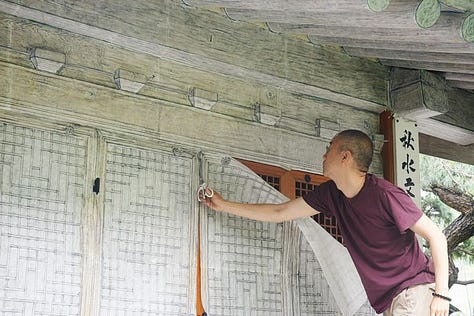
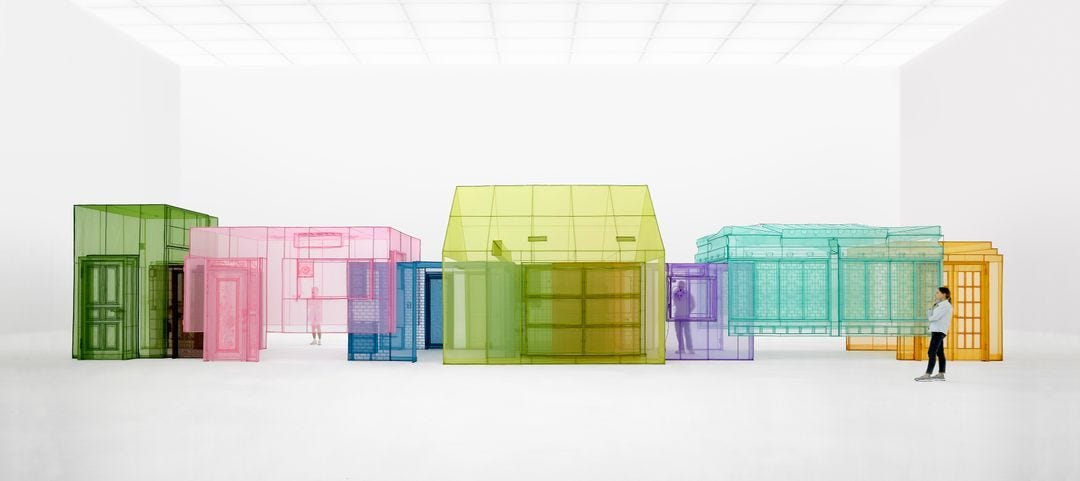
Suh’s Fallen Star (2012), a sky-blue New England cottage tilted at a 53-degree angle atop UC San Diego’s Jacobs Hall, dramatizes uprootedness by immersing visitors in a disorienting domestic environment, where vertiginous floors evoke emotional disjunctions of migration (Stuart Collection, Phaidon). At the Brooklyn Museum in 2003, The Perfect Home II offered a full-scale, translucent nylon replica of his Chelsea apartment, inviting viewers to walk through nineteen years of lived space and confront the impossibility of returning to an “original” home (Brooklyn Museum, Designboom). In the long-term Rubbing/Loving Project (2013–22), Suh and collaborators covered entire interiors in paper and transferred every surface trace via colored pencil rubbings, producing multicolored “maps” of habitation that resist erasure and embody memory itself (Humanities LibreTexts). His recent Nest/s installation (2024), unveiled in Tate Modern’s Walk the House exhibition, recombines fragments from past residences into a single, intertwined fabric nest, emphasizing mobility as creative bricolage and the entanglement of personal histories (Lehmann Maupin, The Guardian).
Drawing on Gaston Bachelard’s concept of the house as psychic palimpsest, Suh’s nested fabric homes externalize layers of memory, allowing viewers to traverse the sedimented strata of his lived experience (The Guardian). Homi Bhabha’s “third space” further articulates how Suh’s itinerant architectures occupy interstitial zones that disrupt binary oppositions of here/there and original/copy, cultivating hybrid identities in mesh form (The Guardian, LinkedIn). Finally, Maurice Merleau-Ponty’s phenomenology of the lived body resonates in Suh’s practice, as the Rubbing/Loving and Hub works record sensory engagements with space, transforming architecture into a vessel of embodied recollection (Humanities LibreTexts).
Through his meticulous fabric reconstructions, Do Ho Suh transcends architectural replication to probe the porous boundaries of memory, identity, and belonging. His weightless, transportable homes stand as traveling archives of personal and collective histories, inviting ongoing reflection on how the spaces we inhabit, and leave, continue to shape our transnational selves.
References:
Designboom. walk through a full-scale fabric replica of do ho suh’s ... Designboom, 5 Nov. 2018, www.designboom.com/art/do-ho-suh-brooklyn-museum-perfect-home-11-05-2018/. (Designboom)
Do Ho Suh. Victoria Miro, 2022, www.victoria-miro.com/exhibitions/501/. (Victoria Miro)
Do Ho Suh – Fallen Star. Stuart Collection, University of California San Diego, 2012, stuartcollection.ucsd.edu/artist/suh.html. (Stuart Collection)
Do Ho Suh: Passage/s. Victoria Miro, 2022, www.victoria-miro.com/exhibitions/501/. (Victoria Miro)
Do Ho Suh: Tracing Time Review – an extraordinarily beautiful search for home. The Guardian, 10 Mar. 2024, www.theguardian.com/artanddesign/2024/mar/10/do-ho-suh-tracing-time-review-scottish-national-gallery-of-modern-art-modern-one-edinburgh. (The Guardian)
Memories of These Places Never Leave You: Artist Do Ho Suh and the Fabric of Home. The Guardian, 13 Apr. 2025, www.theguardian.com/artanddesign/2025/apr/13/do-ho-suh-walk-the-house-tate-modern-interview. (The Guardian)
Penny Craswell. Transparent and diaphanous: Do Ho Suh. ArchitectureAu, 1 Feb. 2023, architectureau.com/articles/do-ho-suh/. (LinkedIn)
Do-Ho-Suh’s Fallen Star rises in San Diego. Phaidon Agenda, 19 June 2012, www.phaidon.com/agenda/art/articles/2012/june/19/do-ho-suhs-fallen-star-rises-in-san-diego/. (Phaidon)
Smarthistory. Do Ho Suh, Rubbing/Loving. Humanities LibreTexts, 2022, human.libretexts.org/Bookshelves/Art/.../13.05%3A_Do_Ho_Suh_Rubbing_Loving. (Humanities LibreTexts)
walk through do ho suh’s installation Passage/s | Video. Victoria Miro, www.victoria-miro.com/video/29/. (Victoria Miro)
Do Ho Suh: Walk the House. Lehmann Maupin via Tate Modern, 2025, www.lehmannmaupin.com/ko/haeoe-jeonsi/do-ho-suh-walk-the-house/bodojaryo. (Lehmann Maupin)
The Perfect Home II. Brooklyn Museum, 2003, www.brooklynmuseum.org/objects/224272. (Brooklyn Museum)
Artist Do Ho Suh: It’s a ridiculous idea, but I take it seriously. Financial Times, 2024, www.ft.com/content/7212916e-463b-427a-ba35-7b6f43213a84. (ft.com)




Can't wait to see the show at Tate!!😭🤍
I have had quite a moment with this artists and your filling in the gaps of understanding I was missing. I think because my own protective mechanisms set in, over time I shunned the processing necessary to fully engage.
This is the truth of it: “…works record sensory engagements with space, transforming architecture into a vessel of embodied recollection.”
We ARE in large part of and made by where we have been. The honesty of it is shattering. We are not floating amoebas, self sustaining, self fulfilling, self replicating. Not only do we need ‘other, but we need a place to be in with it. This, given an upbringing of survival, to be stalwart and fixed in ability to adapt, survive, be self sufficient, constitutes an emotional breakdown of those very same ephemeral walls we see here. What is solid? What is self sufficiency in loneliness? Without home? The human condition is treachery. It evades us as it enlists us to participate in it.
No wonder we love our furbabies so much. They provide comfort on our lonely journeys when walls cannot. Maybe we should all go out and live in the woods again? At least then we will know our Place and be equal among them.